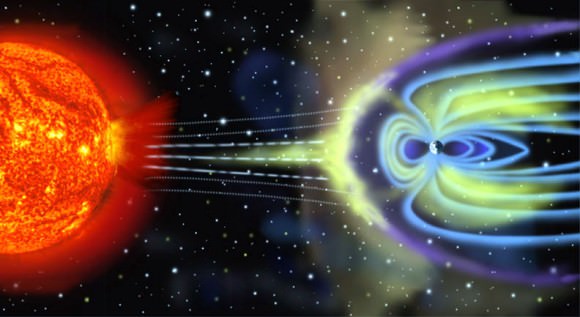Solar storm of 1859
https://en.wikipedia.org/wiki/Solar_storm_of_1859
The solar storm of 1859 (also known as the Carrington Event)[1] was a powerful geomagnetic storm during solar cycle 10 (1855–1867). A solar coronal mass ejection (CME) hit Earth's magnetosphere and induced one of the largest geomagnetic storms on record, September 1–2, 1859. The associated "white light flare" in the solar photosphere was observed and recorded by British astronomers Richard C. Carrington (1826–1875) and Richard Hodgson (1804–1872). The storm caused strong auroral displays and wrought havoc with telegraph systems. The now-standard unique IAU identifier for this flare is SOL1859-09-01.
A solar storm of this magnitude occurring today would cause widespread electrical disruptions, blackouts and damage due to extended outages of the electrical grid.[2][3] The solar storm of 2012 was of similar magnitude, but it passed Earth's orbit without striking the planet, missing by nine days.
On September 1–2, 1859, one of the largest recorded geomagnetic storms (as recorded by ground-based magnetometers) occurred. Auroras were seen around the world, those in the northern hemisphere as far south as the Caribbean; those over the Rocky Mountains in the U.S. were so bright that the glow woke gold miners, who began preparing breakfast because they thought it was morning.[7] People in the northeastern United States could read a newspaper by the aurora's light.[13] The aurora was visible from the poles to the low latitude area,[14] such as south-central Mexico,[15]Queensland, Cuba, Hawaii,[16] southern Japan and China,[17] and even at lower latitudes very close to the equator, such as in Colombia.[18] Estimates of the storm strength range from −800 nT to −1750 nT.[19]
Telegraph systems all over Europe and North America failed, in some cases giving telegraph operators electric shocks.[20] Telegraph pylons threw sparks.[21] Some telegraph operators could continue to send and receive messages despite having disconnected their power supplies.[22]




